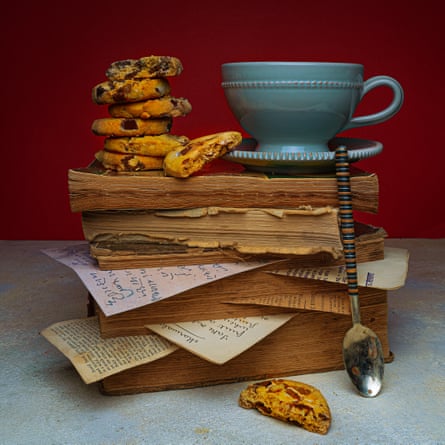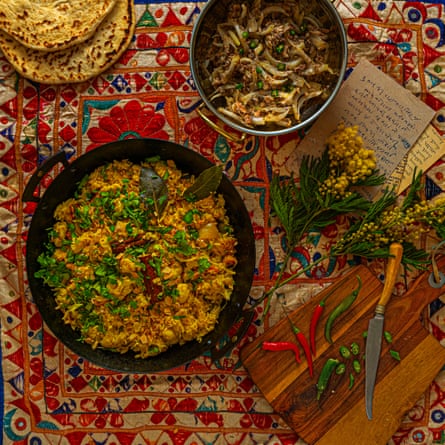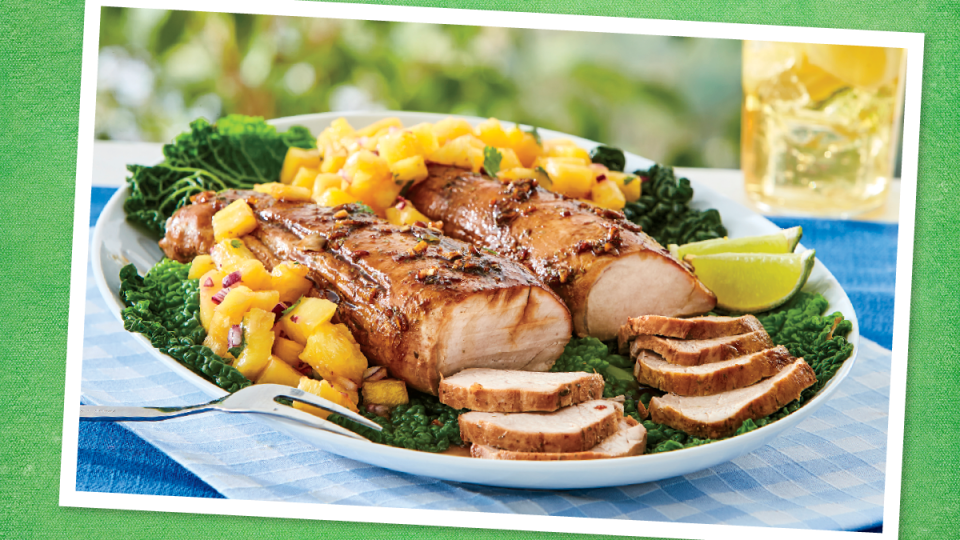There are two types of cooks in this world: those who keep their recipes secret, and those who share with joyful abandon. As someone who falls strongly into the latter camp, I am fascinated by the people who manage to maintain an air of mystery around their culinary creations. They breeze into a potluck supper with their signature dish, the one that everyone eagerly anticipates because nobody else knows how to make it. When a guest asks how the sauce is so wonderfully light, they simply answer with a smile.
I wonder what motivates some to divulge their recipes while others prefer not to. Perhaps it’s a difference in the idea of “ownership” – do recipes belong to anyone, can they be plagiarised, stolen even? Or are we merely stewards, just one stop in a recipe’s long trajectory? For those with closely guarded family recipes, they are more than just a set of instructions: they are inherited fragments of family history. Being part of a select club who know the key ingredient for Grandpa’s lasagne, or the exact proportions for Aunty’s biryani can even strengthen familial bonds. Recipes become an edible continuation of heritage.
For me, swapping favourite recipes – such as failsafe chocolate chip cookies, the perfect pilau, the easiest roast chicken – is the natural extension of the generosity shown in preparing and sharing food. Nevertheless, I sometimes panic when I am asked for the recipe for something I have made. I’m always flattered, of course – what could be a bigger compliment than someone else wanting to recreate my cooking for themselves?
My hesitation is because I cook intuitively, in the way that my mother taught me. I can never be sure exactly how I made something: I estimate quantities by eye, and I have never timed how long it takes for a sauce to reduce. As such, I fear being mistakenly assigned to that third (and worst) category of cook: the ones who give you the recipe, but leave out an essential ingredient or instruction, so it never quite tastes as good when you attempt to make it yourself.
I have a strong memory of watching my mother trying to master the art of making mishti doi, a Bengali dessert of baked sweet yoghurt. My father had tasted the dish at a family friend’s house and couldn’t stop talking about it, so my mother had begged the host for the recipe. But no matter how carefully she followed the instructions, it never tasted the same.
For about two or three months, Ammu would make a different attempt each weekend, but something was always missing. She would ask the friend to clarify measurements and cooking times, and the friend would give vague instructions. Eventually, Ammu worked out that the friend had left out a crucial instruction which was to place the earthenware bowl in a tray of water in the oven, to get the mixture to set. I still remember her sense of achievement when she finally nailed it and thinking how much nicer it would have been if that person had just shared the instructions fully to begin with.

There is a bigger question in all of this: what do we understand a recipe to be? At its most basic, it is a set of cooking instructions to convert certain ingredients into something edible. More elaborate recipes may contain additional information: practical guidance such as how to freeze or recommendations for substitutions; or some backstory regarding the provenance of the dish, its history or details of regional variations.
Recipes are recorded, shared and consulted in myriad ways: they can be codified, in the form of cookery books, a scribbled page torn from a notepad, or even a text message. They can be orally recounted, over the phone by a loved one living in a different country, or through a visual demonstration on a YouTube cooking channel or television programme. My own recipe collection reflects this eclectic way we gather these nuggets: a shelf full of beautifully styled cookery books, cuttings from magazines pinned to the fridge for so long the edges have curled, a folder full of screenshots from recipe blogs on my phone. Whatever their format, I stand by Nigella Lawson’s edict: “A recipe must be utterly reliable, but it is always an invitation, not a command.”
The emphasis on reliability is particularly important when considering the commercial aspect of cookery writing. When I entered the world of professional recipe writing, I had to test and measure diligently, noting timings and cooking temperatures in a way that I never did when cooking for myself. I always nervously awaited the feedback from the magazine test kitchens who would trial my recipes before publishing them, praying that they had worked.
The belief that reliability is attained by specificity is increasingly common. Flicking through a recipe book recently, I noted that exact quantities of herbs were given in grams, rather than the more general estimations of “a small bunch of mint” or “a handful of chopped coriander”. But the role of ingredients is not determined by measurements alone: tomatoes can be more or less ripe, garlic sweeter or stronger, chillies vary in heat. Does giving weights by the gram and timings to the minute account for the natural variation in flavours and preferences? Of course, this depends on how you like to cook. There are some who get frustrated by recipes that say things like “salt to taste”. There are others, like me, who will never weigh out 15g of coriander leaves, regardless of the recipe instruction.
There is also a question of philosophy: what purpose does one believe a recipe ought to serve? I was taught to cook by a mix of demonstration and oral instruction. The recipes I learned from my mother and aunts were recited and assumed a certain level of familiarity with the ingredients and methods: quantities were approximated, timings loosely described, such as “until the oil rises to the top”.
There is a word used across the Indian subcontinent for this: andaaz – loosely translated as estimation. The vagueness is not intended to be difficult; rather, it speaks to the different expectation in what a cooking instruction is supposed to do. In being imprecise and allowing room for variation, it allows a home cook to be able to improvise where needed. Your grandmother would hope you can figure it out even if you’re short an onion and only have green and not red chillies available.
We all use recipes differently. Some see them as laws to be followed to the letter, believing they have been tried, tested and presented as they are for a good reason: if the recipe creator recommends parsley, they meant parsley, and not a different herb. Others view recipes as inspiration; suggestions that appeal to our imaginations and palates, and can be adapted to suit what we have in the fridge. I was struck by a comment made by a friend who recently came out of a relationship. She and her ex-partner cooked very differently: she liked the structure and order; he was much more open to adapting. Perhaps the way we cook can be reflective of how we view life, she said.
We can often trace the course of our lives – who we met, where we lived, what we have done – through the recipes we collect along the way. I love the seemingly coincidental events that result in a recipe being acquired and becoming firmly embedded in one’s repertoire, like the carrot and white bean salad made by a classmate for an end-of-term dinner when I was at graduate school in Philadelphia, and which I still often make for parties.

The stories of different families can become enmeshed: I have a cranberry sauce recipe from a friend’s dad who saved it from Gourmet magazine in November 1985. It came to me complete with his own edits: “Use 1 pound (not 2!) frozen white pearl onions (Birds Eye) instead of all the fuss over the onions,” he advises. Last year, another friend emailed me a recipe for his Granny Esther’s meatballs: “I was lazy and used Google translate,” he explained – the recipe had come to him in Hebrew. Over time the same recipe has been conveyed orally, as well as written, in different scripts and languages, on paper and digitally: a living embodiment of one family’s history, as well as becoming a dish that now appears on my dining table too.
When I got married, some of my friends collected their tried and trusted recipes and wrote them into a book for me. I now make Ed’s baked lemon chicken with chickpeas and Natalie’s tuna coriander pasta with comforting regularity. When my flatmate and I finally parted ways after almost a decade, I gave her a handwritten collection of recipes that I cooked for us as twentysomethings living in London. The other day she sent me a photo: a bowl of white rice, tomato dal and sardine bortha – the Bangladeshi comfort food I used to make, which she now cooks for her own children. It is moving to think that my recipes are becoming part of another family’s story.
In our family we have two grandmothers’ recipe books. My nanu’s book, Rannar Boi, which literally translates to “cookery book”. It is a beautifully illustrated tome of traditional Bengali recipes written in the Bangla script. The front cover illustration depicts the ideal Bengali housewife, in a colourful sari, smiling as she scales fish using a da on the floor, with a large fridge-freezer in the background – the coveted blend of modernity and tradition. Inside, my grandmother’s name is written, then my mother’s and my aunt’s.
My husband inherited his grandma’s treasured The Complete International Jewish Cookbook by Evelyn Rose. Her neatly written notes in the margins offer improvements: “Allow to marinate in lemon juice and oil,” she recommends on a recipe for grilled salmon. For winter barbecued chicken, she advises that “sauce can be thickened with cornflour slaked with water”. This wisdom feels like a gift; we are benefiting from her experimentation decades later.
I have arrived at the idea that there are at least two people – often more – involved in any sharing of recipes: the one who gives it and the cook who follows it, and sometimes someone in-between to offer suggestions or improvements. It is a dance of sorts: one leads, the other follows. There is a necessary sequence, but there is room for flourishes, twirls, additional colour. That’s what makes it beautiful and different every time.
Shahnaz Ahsan is the author of Hashim & Family (John Murray, £14.99)
from "recipes" - Google News https://ift.tt/6G1J95j
via IFTTT

No comments:
Post a Comment